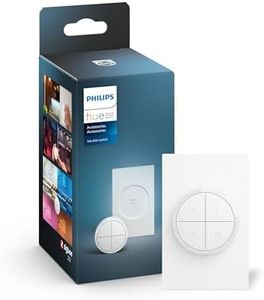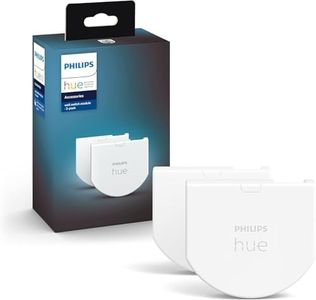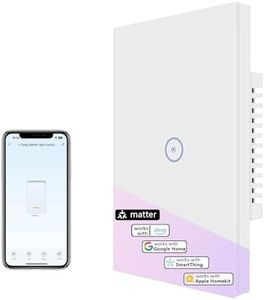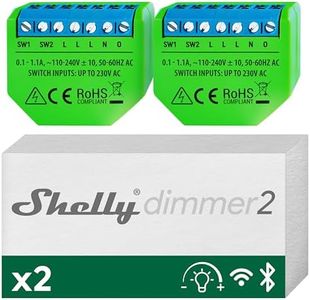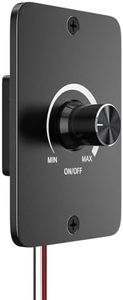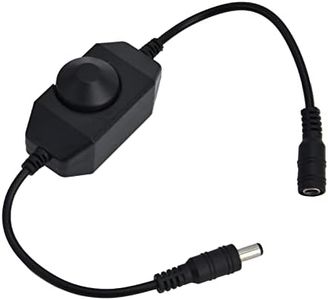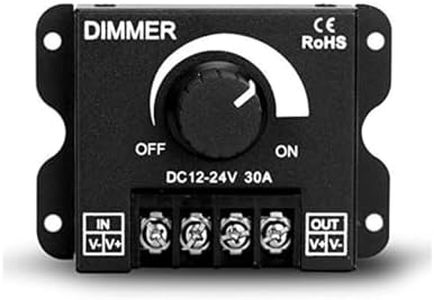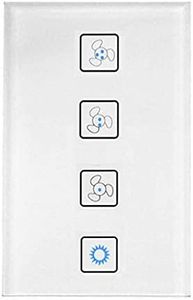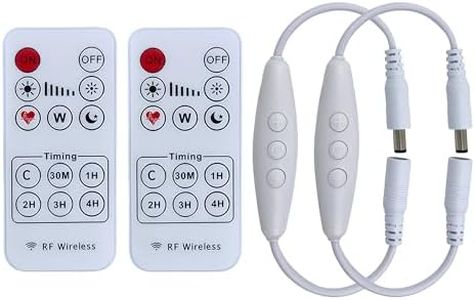We Use CookiesWe use cookies to enhance the security, performance,
functionality and for analytical and promotional activities. By continuing to browse this site you
are agreeing to our privacy policy
10 Best Dimmer Switches
From leading brands and best sellers available on the web.By clicking on a link to a third party's website, log data is shared with that third party.
Buying Guide for the Best Dimmer Switches
When choosing a dimmer switch, your main goal is to find one that works well with your lighting setup while giving you smooth control over brightness. With many types and features available, it can be helpful to understand the important specifications before you buy. Making sense of these specs will help you avoid flickering lights, compatibility issues, or disappointing performance, and instead give you a comfortable and reliable way to set the mood in your spaces.Type of Bulb CompatibilityThis spec tells you what types of light bulbs the dimmer switch can control effectively, such as incandescent, halogen, LED, or CFL bulbs. Not all dimmer switches work with every bulb type—LEDs, in particular, often need special dimmers to avoid flickering or buzzing. You'll often find dimmers rated as 'universal,' meaning they aim to support a wide range of bulbs, while others are specialized. To navigate this, first check the bulbs installed in your home or those you plan to use. Then, ensure your chosen dimmer switch lists clear compatibility. If you might upgrade bulbs in the future, consider a more universal dimmer to keep your options open.
Wattage RatingWattage rating refers to the maximum total power, in watts, that the dimmer can safely handle. This is important because exceeding this limit can cause overheating or failures. You'll usually see a single number (like 600W) or a range. To pick the right dimmer, add up the wattage of all bulbs that will be on the circuit controlled by the dimmer. Choose a switch whose wattage rating is higher than that total. If you have many fixtures or high-wattage bulbs, look for switches with a higher rating.
Control StyleControl style describes how you adjust the brightness, such as through a rotary knob, slide lever, push button, or touch panel. This aspect matters for user comfort and your home's look. Some styles offer simple, reliable control (like a rotary), while others provide advanced features like preset levels. Think about who will use the switch and what feels natural—if accessibility is important, a large slider or touch-sensitive panel may be ideal. Your décor and personal preference should also guide your choice here.
Single Pole vs. Three-WayThis refers to how many locations can control the same light. Single pole dimmers work with one switch location, while three-way dimmers let you control one set of lights from two or more spots, like both ends of a hallway. This is crucial for matching your home's wiring setup. Before buying, note whether the light you want to dim is already controlled from multiple switches. For multiple-location setups, choose a compatible three-way (or four-way) dimmer; for others, a single pole model will do.
Smart FeaturesSmart dimmers connect to wireless networks to allow remote control, scheduling, or integration with virtual assistants. This is more of a modern convenience than a basic need, but it can be important for those wanting smart home capabilities or energy management. If you value voice commands or automation, look for dimmers that specify compatibility with your preferred platform. If you prefer traditional manual control, basic models may suit you best.
Minimum Load RequirementMinimum load refers to the least amount of wattage needed for the dimmer to function properly. Some dimmers, especially those designed for older bulb types, need a certain amount of power drawn to work without flicker. For circuits with just one or two low-wattage bulbs (such as some LEDs), make sure your dimmer doesn’t require a high minimum load. If you have mostly low-wattage bulbs, check for a dimmer specifically rated for low or zero minimum load to avoid performance issues.

